A fifth – 21% – of all global plant species are at risk of extinction, mainly because of climate change, invasive species, habitat loss, pests and disease, warns a new report published by the Royal Botanic Gardens, Kew, in London. The Report also lists which areas of the world are the most important to protect because of their remarkable plant diversity.
According to the Report authors, there are about 391,000 different plant species on Earth – of that total, 369,000 are flowering plants. They claim that theirs is the first global assessment of our planet’s flora.
The scientists gathered and analyzed data from existing databases to come up with their total.
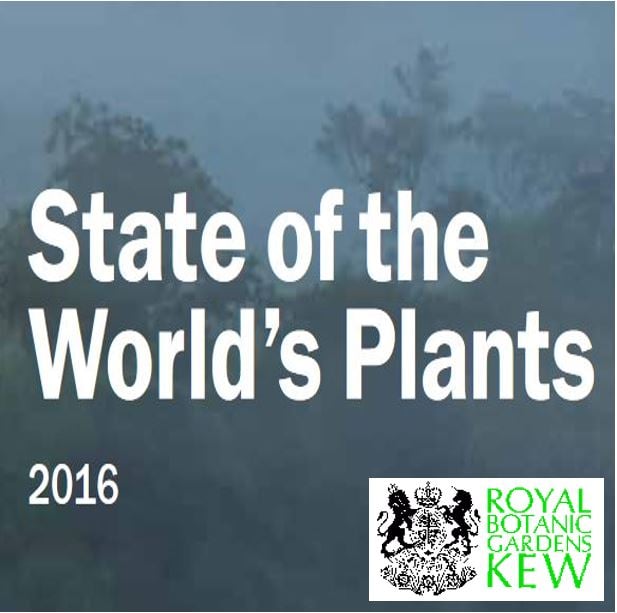 21% of all the plant species on Earth could be gone soon, says a new report. (Image: stateoftheworldsplants.com)
21% of all the plant species on Earth could be gone soon, says a new report. (Image: stateoftheworldsplants.com)
The report – State of the World’s Plants 2016 – warns that habitat changes, including the worrying loss of forests and mangroves, are having a devastating impact on several hundreds of species. The authors also labelled climate change, diseases and pests as serious problems for the survival status of many plants.
Impact of climate change
We know about some of the effects of climate change on plant species in a number of regions across the world.
However, there are still vast areas for which we have very little data – it is important that we carry out research in those regions.
In areas where good data is available, scientists report changes in flowering times, movement of species, and turnover in plant communities with changing climates.
According to the authors:
“All but one of the world’s biomes have experienced more than 10% change in land-cover type in the past decade due to the combined impacts of land-use and climate change.”
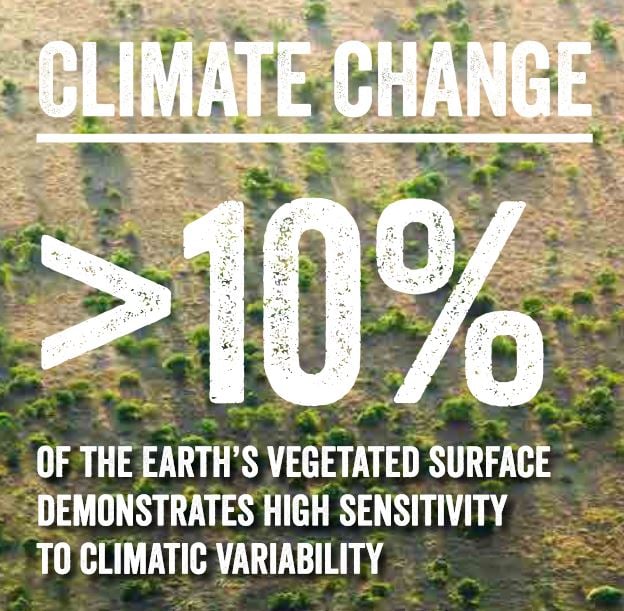 The authors wrote: “The concentration of global atmospheric carbon dioxide has increased from pre-industrial levels of around 280 ppmv to the current 400 ppmv. Meanwhile, global temperatures at the Earth’s surface are warming each year at an average rate that is faster than any trend seen in the past 1,400 years.” (Image: stateoftheworldsplants.com)
The authors wrote: “The concentration of global atmospheric carbon dioxide has increased from pre-industrial levels of around 280 ppmv to the current 400 ppmv. Meanwhile, global temperatures at the Earth’s surface are warming each year at an average rate that is faster than any trend seen in the past 1,400 years.” (Image: stateoftheworldsplants.com)
Invasive plant species and diseases
There is currently a large global movement of alien invasive plant species underway, the authors explained. Approximately 5,000 species are today documented as invasive in global surveys.
These species are causing significant declines in the populations of native plants, transforming land cover, disrupting natural ecosystems, and in many cases causing considerable economic losses.
The most aggressively invasive species share a similar life-form – they have ability to die-back when conditions are unfavourable and survive as seeds, root buds, tubers, rhizomes and bulbs.
The Japanese knotweed, for example, is a life-form that survives below ground as a rhizome. Rhizomes are horizontal underground plant stems capable of producing the shoots and root systems of new plants.
Several new plant diseases are emerging, caused by viral, bacterial and fungal pathogens. At the moment, research efforts into these diseases are heavily slanted towards solving the problems in the rich nations.
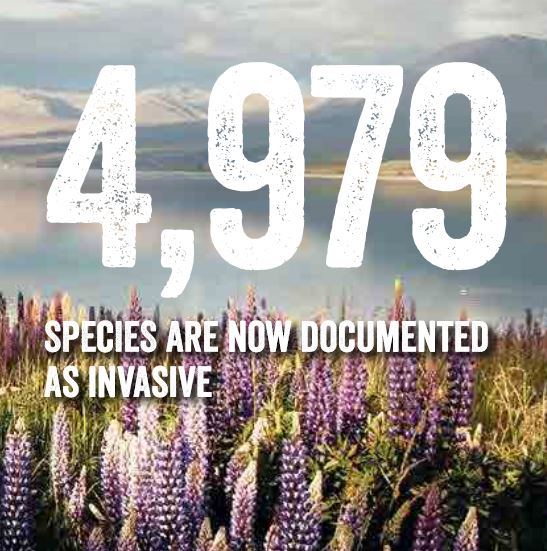 “The costs of invasive species have been estimated at nearly 5% of the world economy, and their impact on the British economy alone is approximately £1.7 billion every year,” the authors wrote. (Image: stateoftheworldsplants.com)
“The costs of invasive species have been estimated at nearly 5% of the world economy, and their impact on the British economy alone is approximately £1.7 billion every year,” the authors wrote. (Image: stateoftheworldsplants.com)
The authors added:
“Given the threats associated with climate change, land-use change, invasive plants and diseases, best estimates lead us to believe that 21% of the world’s plants are currently threatened with extinction.”
“International trade in endangered plants is causing additional pressure on wild biodiversity and strict enforcement of international legislation is crucial. Adoption and implementation of policies such as CITES (Convention on Trade in Endangered Species) other international legislative instruments, such as the Nagoya Protocol, already appear to be having some effect at enabling countries to best conserve and utilise the biodiversity they hold.”
Many new plant species discovered
Just last year, a total of 2,034 new plant species were discovered across the world, including Gilbertiodendron maximum, a tree endemic to Gabon in West Africa which can grow up to 45 metres tall, and Selenipedium dodsoniia, a 3-metre-long slipper orchid from Ecuador.
In 2015, scientists working for Royal Botanical Gardens, Kew (Kew) discovered a new type of sweet potato from the Ipomoea genus (Convolvulaceae family), which they say could be used to create disease-resistant sweet potatoes if cross-bred with commercial species.
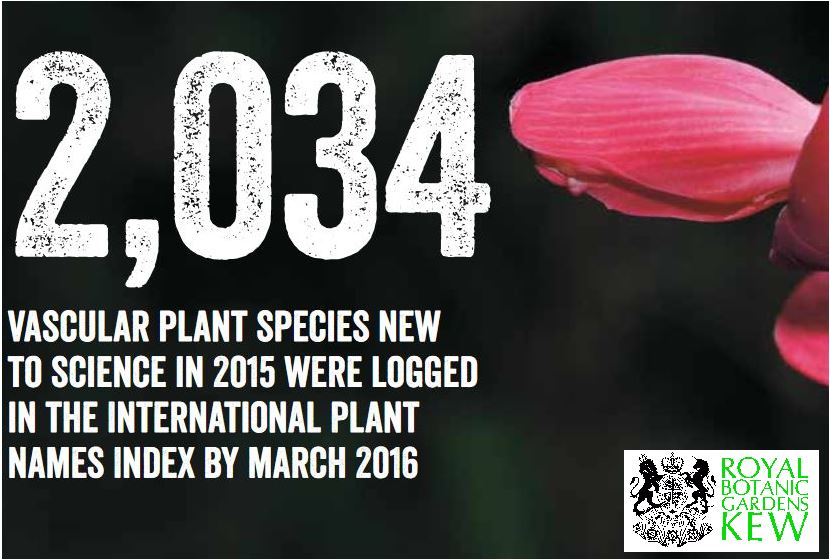 New species of herbaceous plants, shrubs and trees are being discovered all the time, including some new species from well-known horticultural families, grasses, food crops and carnivorous plants. (Image: stateoftheworldsplants.com)
New species of herbaceous plants, shrubs and trees are being discovered all the time, including some new species from well-known horticultural families, grasses, food crops and carnivorous plants. (Image: stateoftheworldsplants.com)
New discoveries in Indonesia and Malaysia include relatives of the sugar apple, or custard apple, as well as ylang-ylang – which may have commercial potential.
Regarding the discovery of new species in 2015, kew.org wrote:
“2015 was a fantastic year for Kew Science: discovering and collecting new species and exploring their evolutionary relationships, uses and conservation. 2016 promises to be an even more prolific year, as Kew scientists push the frontiers of discovery and continue to work towards an exciting scientific strategy and vision.”
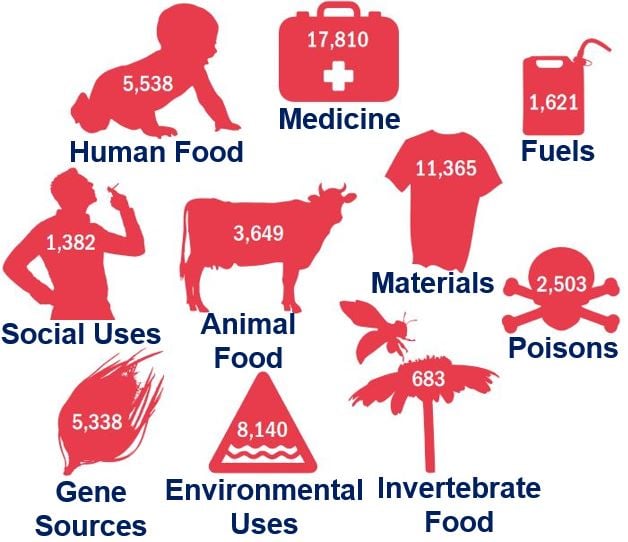 Ever since the first human emerged on this planet, we have been using plants for several different uses. (Image: stateoftheworldsplants.com)
Ever since the first human emerged on this planet, we have been using plants for several different uses. (Image: stateoftheworldsplants.com)
Uses of plants
In terms of what we use plants for, more than 31,000 species have a documented use as medicines, food, materials, etc.
A further 3,546 crop wild relatives have been prioritised for collecting and preservation in gene banks. These plants, from a wide range of ecological and geographic locations, provide a pool of genetic variation that is of vital importance to global food security.
We need to channel more resources and effort into building up these collections in global gene banks, the authors said, including Kew’s Millennium Seedbank.
Video – 21% of plants at risk of extinction
This BBC News video reports on some of the details contained in the new report on the state of the world’s plant species.
